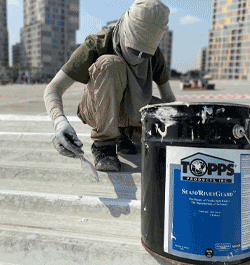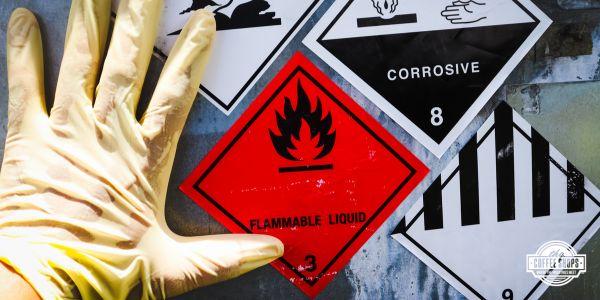UP TO THE MINUTE
Managing Risk Through Pre-operational Planning – Part One

By Cotney Consulting Group.
Understanding why employees are not meeting expectations or experiencing injuries despite well-established standards, programs, policies, procedures and training cannot be overstated.
Performance discrepancies, incident occurrence and operational losses are common within any industry, but the question remains: Are they mere accidents? The organization must assess why projects or processes encounter disruptions, inefficiencies, accidents and losses. Identifying strategies to address these issues without considerable expenditure of time and resources is paramount. Developing solutions that reduce deviations from best practices and organizational expectations is critical to improving performance reliability and optimizing profitability. These considerations demand urgent attention in an era when industries are compelled to enhance efficiency and effectiveness.
Safety is often isolated as a distinct function within the organization in the realm of roofing contractors. A significant portion of our safety efforts is dedicated to preventing accidents. We utilize various programs and strategies to mitigate their adverse effects. Our workers undergo safety training, and our success is gauged by comparing our loss data with national statistics. Accidents and losses affect our risk costs and our competitiveness in this fiercely competitive industry. This can impact our ability to market our services and secure contracts. Accidents usually occur due to ineffective processes, inadequate procedures, poor planning or lack of foresight, not worker intent. Consequently, we must shift from the prevalent worker-focused interventions and investigate areas that the worker has little to no control over but are contributing to undesired outcomes.
Profitability remains a key objective for any business. The optimal way safety can contribute to this is through alignment with organizational goals and objectives. This can only be achieved by integrating safety seamlessly into operations. Safety must be approached from a risk management, operational and systems perspective. It is vital to ensure comprehensive planning is conducted before operation commencement, addressing potential job hazards by evaluating organizational procedures, practices and methods contributing to risk creation.
Pre-operational planning process
Planning is an essential component of contracting and the construction process. Nearly every aspect of construction involves planning. Successful contractors are typically effective planners. Proper and effective planning ensures the procurement, delivery and installation of appropriate materials. Planning facilitates the harmonious collaboration of various trades on the site. Without effective planning, the diverse elements, aspects and functions of roofing would not unite to produce the final finished product — a quality completed roof system.
Pre-operational planning involves reviewing planned operations before and during the roof installation process to identify and eliminate potential sources of loss. Preplanning aims to reduce hazards, minimize disruptions, increase efficiency and lower costs.
Incidents on roofing construction sites result in disruptions and losses. Can the fundamentals of planning be applied to safety to minimize these negative outcomes? Fortunately, the answer is yes. Let's examine the planning process and explore how you can integrate safety management effectively into your operational and logistical planning.
Justification for preplanning
A research study conducted by the Construction Industry Institute identified that pre-project/pre-task planning is the most effective tool a contractor has to prevent accidents at their work sites. A follow-up study a decade later, encompassing a larger group of contractors, reached the same conclusion.
Planning is a crucial management tool for marshaling, managing and controlling resources — workers, materials and equipment. Safety is also a managed process, akin to other aspects of the roofing construction business. A project should not be executed without a plan, and safety management should be treated similarly. Pre-operational planning is proactive in nature, allowing the management of people, resources, events and accident-causing situations based on a plan. Problems (loss sources) can be anticipated by being proactive, and methods can be developed to minimize or eliminate their impact. Roofing projects can be dynamic and often involve many diverse organizations collaborating to achieve a common goal.
Pre-operational safety planning process
Preplanning aims to reduce risks, minimize disruptions, enhance workflow, increase efficiency and lower costs. Pre-operational safety planning involves integrating safety into the construction operational plans and procedures. It examines potential risks in strategic and operational plans, construction procedures or work processes that will eliminate them or provide controls to minimize their adverse effects. Reviews of applicable safety program elements are conducted to ensure that operations comply with the program's intent and that the program addresses them. In essence, preplanning scrutinizes the construction process's when, how, who, where and what, focusing on safety outcomes.
Pre-operational preplanning timing
The process for safety planning can be performed at four distinct stages in the life of a project: before the bid or pre-construction effort, before any fieldwork begins, at the beginning of each major construction phase, and before each individual task. The most significant value of this effort is derived when it is conducted as early as possible in the project's life.
Bid stage
The bidding stage is the most effective time to address potential safety concerns on a roofing project, as they can be identified, eliminated and budgeted for most effectively. One may even decide not to bid on a project, avoiding potentially unacceptable risks.
Job mobilization
This is when risks can be addressed most effectively, as few commitments have been made, and you can implement holistic changes to the project more efficiently. This is the time to address the interfaces of various subcontractors' operations. This stage also presents the best opportunity to maximize the return on your safety investment.
Pre-operations stage/by job phase
This phase enables fine tuning of the previous plan. Subcontractors may now be contracted and can contribute to the risk evaluation and mitigation process. More detailed information may be available now, allowing you to address more issues in greater depth.
Special operations/tasks
You may encounter unique situations requiring special attention, such as helicopter lifts. These must be addressed in detail, and contingency plans to manage potential exposures must be developed.
You will accomplish pre-operational safety planning at three levels: Universally for the complete project, specific operations with high risk and exposure potential, and each task. It is most beneficial to examine the entire project because this allows for the most effective and comprehensive solutions.
Part two of this series will discuss who should be involved in preplanning and how to preplan.
Learn more about Cotney Consulting Group in their Coffee Shop Directory or visit www.cotneyconsulting.com.



















Comments
Leave a Reply
Have an account? Login to leave a comment!
Sign In